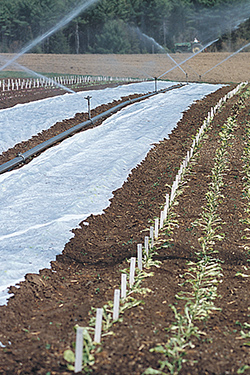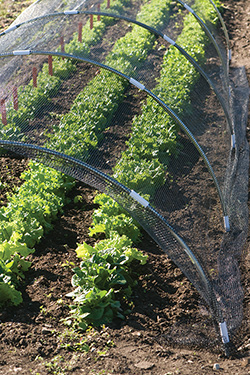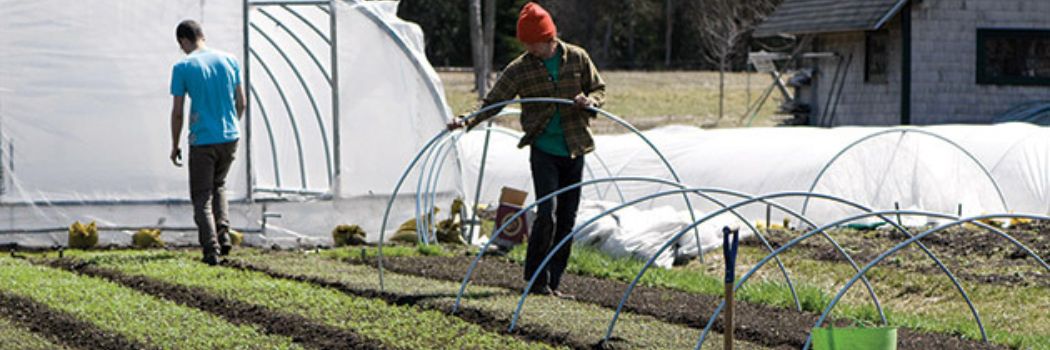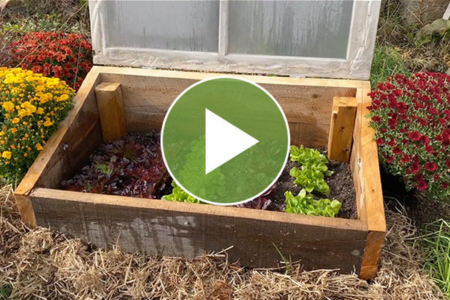- 10 Ways to Extend Your Season with Protected Cultivation
- QuickHoops Gothic High Tunnel Bender | Construction Manual for Modular Moveable Gothic High Tunnel (PDF)
- QuickHoops Gothic High Tunnel Bender | Construction Manual for Stationary Gothic High Tunnel (PDF)
- QuickHoops High Tunnel Bender | Construction Manual for Building a Stationary High Tunnel (PDF)
- QuickHoops Low Tunnel Benders | Instruction Manual (#9377 & #9520) | (PDF)
- Agribon+ AG-19, 30, 50 & 70 Row Cover | Insert (PDF)
- Hitch Mount for QuickHoops Low Tunnel Benders | Instruction Manual (PDF)
- Bobcat Automatic Ventilation Kit Manual (#6791) | Tech Sheet (PDF)
- Bobcat Pro High Tunnel Kit Manual (#6794) | Tech Sheet (PDF)
- Bobcat Pro High Tunnel Kit (#6794) | Parts List (PDF)
- Bobcat Sliding Door Kit Manual (#6792) | Tech Sheet (PDF)
- Bobcat Standard High Tunnel Kit Manual (#6795) | Tech Sheet (PDF)
- Bobcat Standard High Tunnel Kit (#6795) | Parts List (PDF)
- Bobcat Steel End Wall Kit Manual (#6793) | Tech Sheet (PDF)
- Truss Support Kit Manual (#6790) | Tech Sheet (PDF)
- Bobcat Tunnel Kits | Comparison Chart
- Beginning & Intermediate Controlled Environment Agriculture (CEA) | Advances in Greenhouse Crop Production
- 5 Cool Flowers to Plant Now | Lisa Mason Ziegler's Secrets for Growing Hardy, Cool-Season Annuals
- Hoop Loops | Installation Instructions | Tech Sheet (PDF)
- Introduction to Overwintering Flowers | Guide to Overwintering Flowers
- Overwintering Perennial Herbs
- Protect Your Crops | High & Low Tunnel Basics
- The Effect of Shorter Daylength on Winter Production
- Be First & Last to Market by Extending Your Growing Season
- Quick Hoops Low Tunnels | Set-up & Management with Eliot Coleman
- Constructing the Modular Moveable Gothic Tunnel – Animated Schematic
- Moving the Modular Moveable Gothic Tunnel – Slideshow
- Skinning the Modular Moveable Gothic High Tunnel – Slideshow
- Overwinter Flower Trials | Multiyear Results for 30+ Crops | Johnny's Selected Seeds | XLSX
- Seeding Date Calculator | Johnny's Recommended Flowers for Overwintering | XLSX
- Overwintering Onions from Seed | Johnny's Selected Seeds
- Winter Growing Guide | Part 5: Overwintering Planting Dates
- Pest & Disease Control Basics in Greenhouse, Hydroponic & Other Protected-Culture Systems
- Pests & Diseases of Greenhouses & Hydroponic Systems | Tech Sheet (PDF)
- Why & What to Grow in a Greenhouse? Basics of Protected Culture
- Recommended Varieties from Our Greenhouse Trials | What We Look for in Greenhouse Crops
- QuickHoops 3'W x 4.5'H Low Tunnel Bender (#7616) | Instruction Manual (PDF)
- Cable Purlin Trellis for QuickHoops High Tunnels | Installation Manual (PDF)
- QuickHoops Moveable High Tunnel Bender | Instruction Manual (PDF)
- QuickHoops Seedling & Microgreens Bench | Construction Guide (PDF)
- Row Cover & Insect Netting Options & Uses | Comparison Chart (PDF)
- Tufflite IV Greenhouse Film | Comparison Chart (PDF)
- Univent Automatic Opener for BiFold Doors | Instruction Manual (PDF)
- Video: Johnny's Season Extension & Overwintering Trials
- Video: Planning & Planting the Autumn Vegetable Garden | Tips & Recommendations with Niki Jabbour
- Video: Veggie Remix: Bring New Flavors & Colors Into Your Garden | Johnny's Webinar Series
- Video: Growing Under Cover with Niki Jabbour | Johnny's Webinar Series
- Video: Cover Cropping for Field & Garden with Collin Thompson | Johnny's Webinar Series
- Video: DIY Cold Frame • Easy How-to Tutorial with Niki Jabbour
- Video: Tips & Crop Recommendations for the Autumn and Winter Cold Frame • Tutorial with Niki Jabbour
- Video: How to Use Quick Hoops™ Benders to Create High & Low Tunnels
- Video: The Benefits of Row Covers | Recommendations & Tips
- Video: Hoop Houses & Other Ways to Extend Your Growing Season
- Video: Take a Tour with Us of Johnny's Greenhouses!
- Growing Under Cover with Niki Jabbour & Johnny's | Johnny's Educational Webinar Resources
- Johnny's Winter Growing Guide | Printable Brochure (PDF)
- Winter Growing Guide | Part 2: Production in the High Tunnel
- Winter Growing Guide | Part 1 - Introduction
- Winter Growing Guide | Part 3: Overwintering in Low Tunnels
- Winter Growing Guide | Part 6: Recommended Crops & Varieties
- Winter Growing Guide | Part 4: Planting Dates for a Winter Harvest
- Video: Winter Sowing & Milk-Jug Greenhouses | With Niki Jabbour & Johnny's
- When to Start Seeds for Overwintered Flowers | Guide to Overwintering Flowers
- Gardening in a Cold Frame With Niki Jabbour
- Choosing Flower Crops to Overwinter | Guide to Overwintering Flowers
- Webinar Slide Deck | Overwintering Flowers | 41-pp PDF
- Video: Irrigation Considerations for the Overwinter Flowers Tunnel | Johnny's Selected Seeds
10 Season-Extension Strategies
Season Extension through Protected Cultivation
Season extension through protected cultivation—growing with methods and materials that moderate the weather—is a universal component of horticultural production. Hoophouses/high tunnels, low tunnels, row covers, and mulches are widely used on market farms and homesteads because of the tremendous benefits they offer. You can use these materials and methods to harvest earlier in spring and later in fall, extend and stagger the harvest of most crops, improve appearance and eating quality, protect against pests and diseases, and increase yields. Indeed, they can be used not just to extend growing into the shoulder seasons but to enable four-season production.

View All Our Row Cover & Accessories…
Most important, protected cultivation strategies can help you spread out your workload over time. That means less stress and burnout in summer's heat, more enjoyable farming in pleasant weather. For those who farm for a living, season extension helps increase revenue. Most growers who adopt these practices are pleased by the additional income derived from the relatively low investment in these structures and products.
Protected cultivation does add a level of complexity to a vegetable farm or homestead, but it's a challenge that most growers enjoy. You may need to adjust your thinking about some of the many elements of farming. The frost-free date becomes less critical, while day length becomes more important. Large plantings can be replaced by numerous smaller plantings in various environments, or successive plantings. You may even start to grow crops that you had never previously considered or had never before thrived in the field for you.
At Johnny's Research Farm in Albion, Maine, we are continually trialing products and varieties to identify the best combinations for protected cultivation. You'll find the season-extension products you need here on our website and in the catalog. Below, we introduce 10 ideas for achieving season extension. These are suggestions for getting started — as you explore alternatives to field production on your own farm or backyard garden, you will likely discover new ways to improve your crops, increase your income, and enjoy your work more fully.
10 Season-Extension Suggestions For Vegetable Growers

View All Our Season-Extension Tools & Supplies…
- Plant cold-loving crops in a high tunnel in January and February, and cover with row cover on hoops.
- Seed leeks in a cold frame in January or February, and transplant them into a low tunnel as soon as the soil can be worked.
- Start cool-weather crops in a low tunnel two to three weeks before you plant them unprotected in the field.
- Plant cucumbers and tomatoes in a high tunnel a month before field planting.
- Plant eggplant in low tunnels covered with lightweight row cover to protect against flea beetles.
- Put shade cloth on hoops in summer and plant heat-tolerant lettuces.
- Lay shade cloth on the soil for a week before planting fall crops, to improve germination while the weather is still hot.
- Keep heavy row cover on hand in case of a late (spring) or early (fall) frost.
- Plant spinach and carrots in the hoophouse, in quantities sufficient to harvest throughout the winter.
- Plant spinach in low tunnels to overwinter; it will resume growth in late winter/early spring to produce the first crop of the new season.
Winter Growing & Overwintering Resources
- Winter Growing Guide: Winter Harvesting & Overwintering for Spring Harvest • Article Series
- Guide to Overwintering Flowers • Article Series
- Guide to Forcing Flower Bulbs • Article Series



